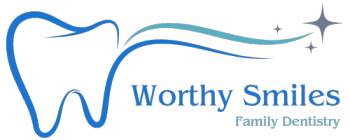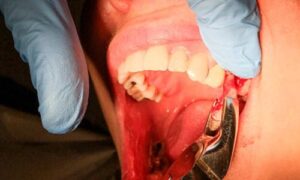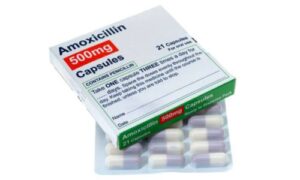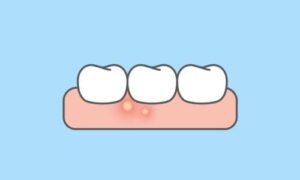These Dental treatments are essential to maintaining good oral health, and many different types are available to address various issues. This article will overview some of the most common dental treatments, including preventative, restorative, cosmetic, and orthodontic procedures.
1. Preventative Dental Treatments
Preventative dental treatments aim to prevent dental problems from occurring in the first place. Here are some common preventative dental treatments:
Regular Dental Cleanings
Regular dental cleanings are essential to remove plaque and tartar build-up from teeth. Dental hygienists use specialized tools to scrape away plaque and tartar from teeth and then polish them to remove surface stains. Regular dental cleanings are typically recommended twice a year.
Fluoride Treatment
Fluoride is a mineral that can strengthen teeth and prevent tooth decay. Fluoride treatments can be done during a regular dental cleaning or as a standalone treatment. These treatments involve applying a fluoride gel or varnish to teeth, which is left on for a few minutes and then rinsed off.
Sealants
Dental sealants are thin, plastic coatings applied to the chewing surfaces of back teeth. They help prevent tooth decay by filling in the grooves and pits where bacteria can hide. Sealants are usually used on children’s teeth when permanent molars come in.
Dental X-rays
Dental X-rays detect dental problems that may not be visible to the naked eye, such as cavities, gum disease, and impacted teeth. They use low radiation levels to produce images of the teeth and jawbone. Dental X-rays are typically recommended once a year.
2. Restorative Dental Treatments
Restorative dental treatments aim to restore damaged or decayed teeth to their natural function and appearance. Here are some common therapeutic dental treatments:
Dental Fillings
Dental fillings are used to repair cavities in teeth. They involve removing the decayed portion of the tooth and filling the space with tooth-colored filling material, such as composite resin.
Root Canal Therapy
Root canal therapy is needed when the pulp inside a tooth becomes infected or inflamed. It involves removing the infected pulp and filling the space with a unique filling material. A crown is usually placed over the tooth to protect it.
Dental Crowns
Dental crowns are used to restore badly damaged or decayed teeth. They involve removing the outer portion of the tooth and fitting a custom-made crown over the remaining tooth structure. Crowns can be made from various materials, including porcelain, metal, and ceramic.
Dental Bridges
Dental bridges are used to replace one or more missing teeth. They involve attaching a prosthetic tooth or teeth to adjacent teeth using dental crowns. These bridges can be made from various materials, including porcelain, metal, and ceramic.
Dental Implants
Dental implants are used to replace missing teeth. They involve surgically placing a small metal post into the jawbone and attaching a custom-made crown to the base.
3. Cosmetic Dental Treatments
Cosmetic dental treatments aim to improve the appearance of teeth and give patients a more attractive smile. Here are some common cosmetic dental treatments:
Teeth Whitening
Teeth whitening is a popular cosmetic dental treatment that can brighten teeth and remove surface stains. It involves applying a bleaching agent to the teeth, activated with a special light. Teeth whitening can be done in-office or with take-home kits provided by a dentist.
Dental Bonding
Dental bonding is a simple cosmetic dental treatment that can improve the appearance of chipped, cracked, or discolored teeth. It involves applying a tooth-colored resin to the affected tooth and shaping it to match the surrounding teeth. The resin is then hardened with a special light.
Porcelain Veneers
Porcelain veneers are thin, custom-made shells bonded to the front of teeth to improve their appearance. They can cover up chips, cracks, gaps, and stains and give patients a more even and attractive smile.
According to the Washington Post, More than 1 in 4 U.S. adults — 26 percent — have untreated dental cavities, according to oral health data gathered by the Centers for Disease Control and Prevention.
4. Orthodontic Dental Treatments
Orthodontic dental treatments aim to straighten teeth and improve bite function. Here are some common orthodontic dental treatments:
Traditional Metal Braces
Traditional metal braces are a standard orthodontic treatment using brackets and wires to move teeth into their correct position gradually. They can address many orthodontic issues, including crowded, crooked teeth and bite problems.
Ceramic Braces
Ceramic braces work like traditional metal braces but use clear or tooth-colored brackets and less noticeable wires. They can be a good option for patients who want a more discreet orthodontic treatment.
Clear Aligners
Clear aligners are a popular orthodontic treatment that uses a series of clear, removable trays to move teeth into their correct position gradually. They can be a good option for patients who want a more discreet and flexible orthodontic treatment.
Conclusion
Treatments are essential for maintaining good oral health and a beautiful smile. From preventative treatments like regular dental cleanings and fluoride treatments to restorative treatments like dental fillings and root canal therapy to cosmetic treatments like teeth whitening and porcelain veneers to orthodontic treatments like traditional metal braces and clear aligners, there are many options available to meet patients’ needs. If you are interested in improving your oral health or the appearance of your smile, talk to your dentist about which dental treatments might be right for you.














